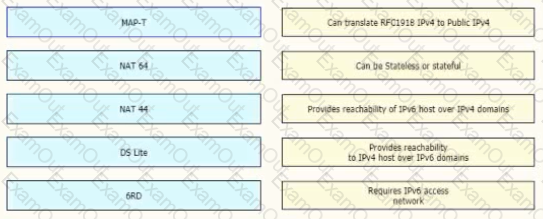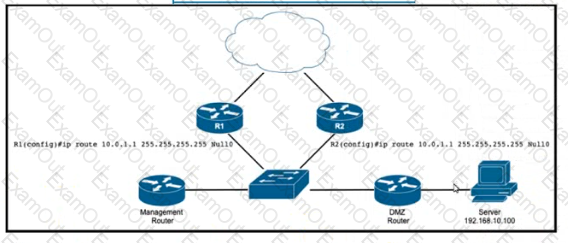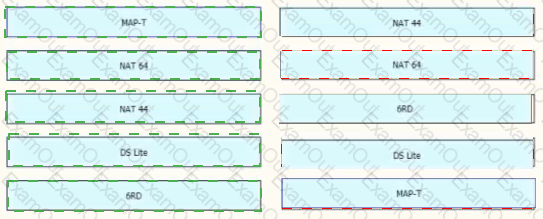Drag and drop the functionalities from the left onto the target fields on the right.

Refer to the exhibit.

A network operator has two IPv4 and IPv6 dual-stacked network on each side of the IPv4 core network. The operator must be able to provide connectivity between them while using specific assigned IPv6 space provided from the company IP administrator team. Which technology should the network operator use to accomplish this goal?


Refer to the exhibit. EIGRP a running across the core lo exchange Internal routes, and each router maintains 6GP adjacency with the other routers on the network. An operator has configured static routes on the edge routers R1 and R2 for IP address 10.0.1.1. which is used as a black hole route as shown. Which configuration should the operator Implement to me management rouler to create a route map that will redistribute lagged static routes into BGP and create a static route to blackhole traffic with tag 777 that Is destined to server at 192.168.10.100?

How can a network administrator secure rest APIs?
Which protocol is used for communication between the PCE and PCC?
Which action does the ingress VTEP perform on traffic between EVPN VXLAN overlays?
What is the purpose of RSVP tear messages?
Refer to the exhibit.

An engineer needs to implement this QoS policy on customer's network due to ongoing slow network issues. What will be the effect on the network when the engineer implements this configuration?
A network administrator is planning a new network with a segment-routing architecture using a distributed control plane. How is routing information distributed on such a network?
Which function does RSVP perform in a Cisco MPLS TE environment?



